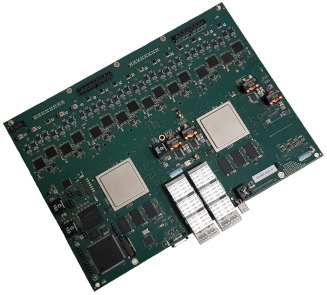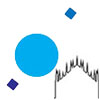IASF Milan is involved in the Square Kilometer Array (SKA) radio telescope project, in particular in the Low Frequency Aperture Array (LFAA) component.
This component at the end of SKA phase 1 will consist of more than one hundred thousand log periodic antennas. The current architecture sees the transport of the radio-frequency bandwidth of 300MHz to a central processing facility. Antenna signals are there digitized, channelized and beamformed together to form logical stations which are aggregations of 256 antennas. The antennas are grouped in tiles of 16 antennas each. Each tile is associated to a Tile Processing Module (TPM) able to process inputs signals from the 16 antennas, and 16 TPMs are connected together in a flexible way to form a station, using a general purpose high speed Ethernet interconnect.
In 2013, a project was started for the design and implementation of an ad hoc digital platform for the LFAA component able to produce a station beam, resulting from a chain of 16 TPMs. An international collaboration has been settled that has yield to the production of a digital board, called Analog Digital Unit (ADU) with firmware and software for testing, processing and control.

The main characteristics of the ADU board are the following:
- 32 analogue inputs (16 antennas in double polarization) with ADC sampling up to 1 Gsample/s;
- High speed internal bus for high performance data processing (400 MHz internal bus);
- Output communication on high speed digital channels (80 Gbit/s);
- Massive data elaboration through cutting edge FPGA devices (20nm);
- High integration density;
- Low power solution.
Members of the collaboration are the Institute of Radioastronomy in Bologna, the Arcetri Astrophysical Observatory, Catania Astrophysical Observatory, IASF Milano, the University of Oxford, the University of Malta, Science and Technology Facility Council and Sanitas EG company.
IASF Milan was involved in the development of the first prototype of the ADU board, and is currently involved in the realization of the digital electronics for the subrack for an LFAA cabitnet. A subrack allows the housing of eight ADU boards (128 antennas).
If you need further information, please visit the official SKA web site.
